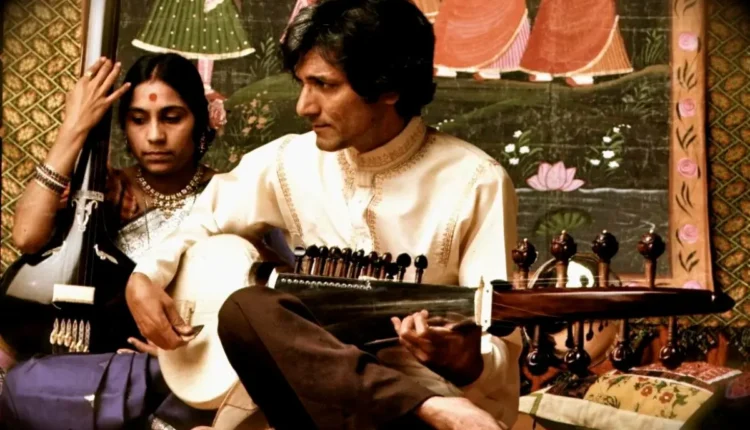In the vast landscape of Indian classical music, one name shines brightly, resonating with mastery, innovation, and unwavering dedication – Vasant Rai. A virtuoso of the sarod, Vasant Rai’s life and music have left an indelible mark on the world of music, transcending boundaries and inspiring generations.
Early Years and Musical Education of Vasant Rai
Vasant Rai’s musical odyssey began in the quaint town of Unjha, Gujarat, where he was born into a family deeply rooted in musical traditions. Under the guidance of his father and elder brother, Vasant delved into the intricacies of various instruments, including the sitar, violin, and flute, showcasing his prodigious talent from a young age.
At the age of 13, Vasant’s musical trajectory took a momentous turn when he discovered the sarod, a mystical Indo-Afghan instrument that would become synonymous with his name. Fascinated by the enchanting melodies produced by Ustad Allauddin Khan, Vasant embarked on a relentless pursuit to learn from the maestro himself, despite the daunting odds.
Journey with Ustad Allauddin Khan
In 1958, Vasant Rai’s dreams materialized as he became the last disciple to receive the complete musical training from Ustad Allauddin Khan. Immersed in the hallowed halls of his guru’s abode in Maihar, Vasant honed his skills under the watchful eye of a master, delving deep into the soul-stirring realms of Indian classical music.
Venturing Beyond Boundaries
Armed with a profound understanding of Indian classical music, Vasant Rai embarked on a journey that transcended geographical and cultural boundaries. In 1972, he ventured to the bustling metropolis of New York City, where he would carve a niche for himself as a pioneering ambassador of Indian music in the West.
Innovation and Collaboration
Vasant Rai’s musical prowess knew no bounds as he seamlessly blended the rich tapestry of Indian classical music with Western sensibilities. Collaborating with acclaimed musicians like Carlos Santana and John McLaughlin, he pushed the boundaries of traditional music, creating mesmerizing compositions that captivated audiences worldwide.
Influence on Western Music
Vasant Rai’s impact extended far beyond the realm of Indian classical music, as he seamlessly integrated Eastern melodies with Western harmonies. His collaborations with renowned Western musicians such as Lex Hixon, Collin Walcott, and Don Cherry exemplified his versatility and adaptability, showcasing the universal language of music that transcends cultural boundaries.
The Evolution of the Sarod
Throughout his illustrious career, Vasant Rai played a pivotal role in advancing the technical capabilities of the sarod. Drawing inspiration from his guru, Ustad Allauddin Khan, Vasant introduced innovative techniques and stylistic nuances, enriching the repertoire of this ancient instrument.
His mastery of both traditional and contemporary styles cemented his reputation as a trailblazer in the world of Indian classical music.
Teaching and Mentoring
A dedicated teacher and mentor, Vasant Rai established the Alam School of Indian Classical Music in New York City, where he imparted his knowledge to aspiring musicians from diverse backgrounds.
His pedagogical approach combined rigorous training in traditional Indian music with a spirit of experimentation, nurturing a new generation of talent poised to carry forward his musical legacy.
Exploration of New Frontiers
While deeply rooted in the classical tradition, Vasant Rai was not bound by convention, as evidenced by his forays into uncharted musical territories.
His invention of the sur-guitar, a fretless sarod-guitar hybrid, showcased his innovative spirit and willingness to push the boundaries of musical expression. Through his pioneering efforts, he bridged the gap between East and West, forging a path of artistic exploration and cultural exchange.
Legacy and Influence
Until his untimely demise in 1985, Vasant Rai remained a beacon of inspiration for musicians and aficionados alike. His legacy lives on through his disciples, his son Satyam, an accomplished sarod player, and daughter Sangita, a Kathak dancer, carrying forth the torch of Indian classical music with unwavering dedication.
Also Read:Sanjay Mishra: Mastering the Strings of Cultural Diversity

